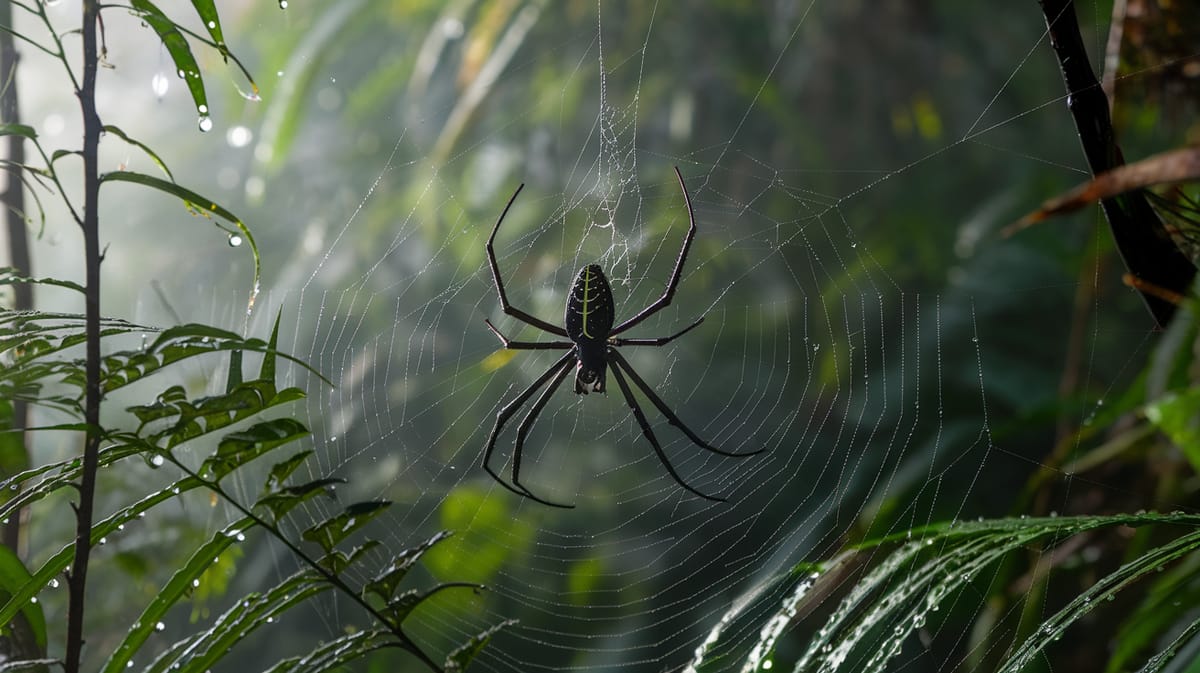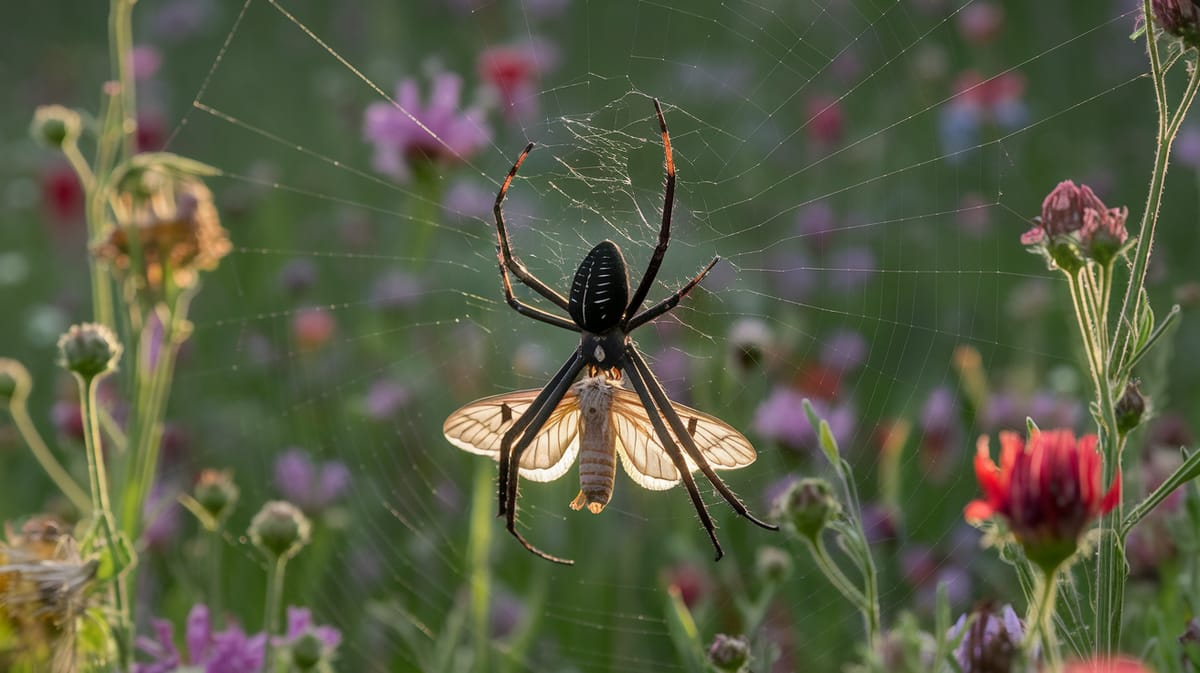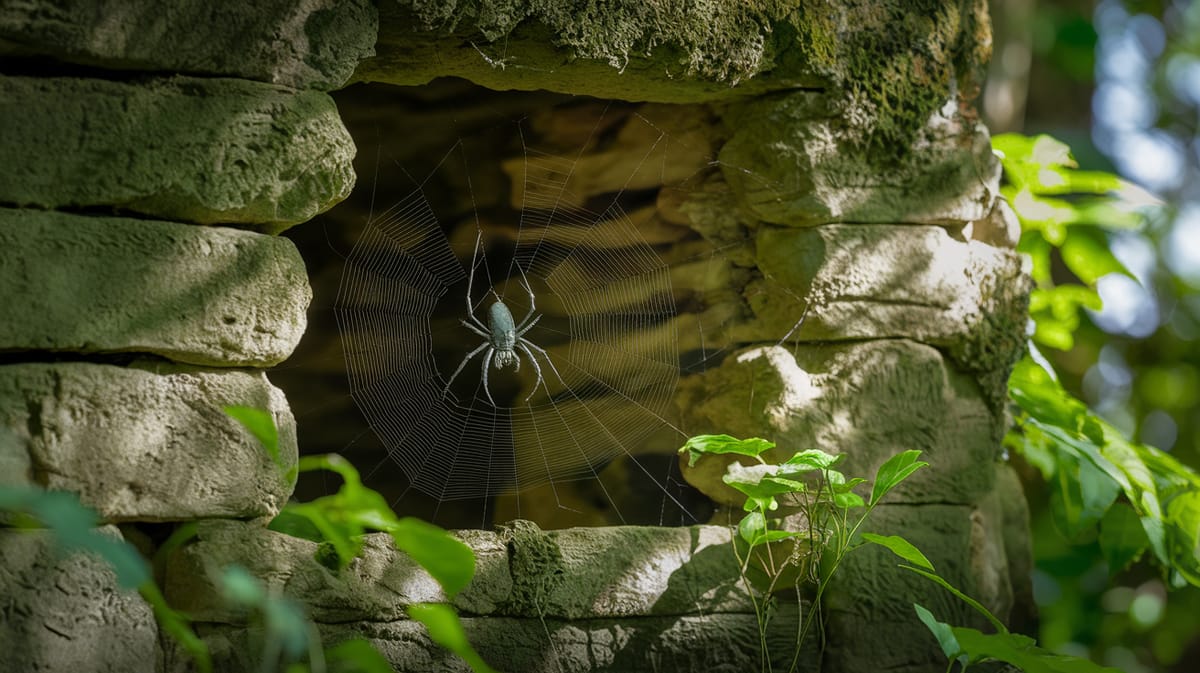Black Orb Weaver Spider
Spinning intricate webs, the Black Orb Weaver Spider masters the art of ambush, showcasing nature’s genius in both design and survival. Its presence maintains a delicate balance in ecosystems.

Key Insights at a Glance
Did You Know?
Taxonomy & Classification
Black Orb Weaver Spiders exhibit intricate web designs and exceptional prey-capture strategies, reflecting their evolutionary adaptation as skilled hunters in diverse environments. Let's understand the evolutionary journey and classification of these remarkable predators.
Global Presence
Araneus genus includes over 1,500 species, widely distributed across continents, showcasing their adaptability to various climates and ecosystems.
Evolutionary History
Originating around 300 million years ago, orb weavers have survived major extinction events, evolving complex web-building skills crucial for their survival.
Lifecycle and Growth
A remarkable journey of transformation from Egg to Adult.
Egg
Encased in a protective silk sac, the eggs develop in a hidden area, ensuring safety from predators and environmental threats.
Spiderling
Emerging as tiny replicas of adults, spiderlings disperse via silk threads, which aid in locating new habitats for growth.
Adult
Fully developed, adults weave intricate webs to capture prey and engage in mating behaviors to propagate the species.
Dietary Habits
A stealthy hunter with impressive web-building skills, this spider's diet includes insects, small vertebrates, and occasional opportunistic prey.
| DIET TYPE | DESCRIPTION |
|---|---|
| Primary Diet | Primarily consumes flying insects like moths, mosquitoes, and beetles caught in its intricate web. |
| Secondary Diet | Also feeds on ants, small caterpillars, and other ground-dwelling insects found near its habitat. |
| Occasional | Occasionally preys on small amphibians or reptiles trapped in its web under favorable conditions. |

Behaviour and Adaptations
Discover the fascinating abilities that define the Black Orb Weaver Spider's survival and hunting skills.
Web Architecture
Constructs intricate webs to trap prey effectively in its silken threads.
Nocturnal Activity
Predominantly active at night, reducing competition and predation risks.
Vibrational Sensitivity
Detects prey movements through vibrations transmitted through the web.
Ecosystem Impact
The Black Orb Weaver Spider plays a crucial role in maintaining ecological balance through natural pest control and habitat support.
Natural Pest Controller
Keeps insect populations in check by preying on flies, mosquitoes, and moths.
Web Architect
Constructs webs that serve as habitats for small organisms and aid in biodiversity.
Biodiversity Indicator
Presence indicates a healthy ecosystem with balanced predator and prey populations.
Conservation Challenges
Understanding and addressing the major threats to Black Orb Weaver Spider populations.
Habitat Loss
Deforestation and urbanization destroy the spider's natural habitats.
Pesticide Use
Chemicals harm spider populations and disrupt food chains.
Climate Change
Altered weather patterns impact the spider's survival and reproduction.
Frequently Asked Questions
How long do Black Orb Weaver Spider live?
Black Orb Weaver Spiders typically have a lifespan of one to two years. Environmental factors and availability of food can influence their life expectancy. Most of their life is spent in the web, where they hunt and reproduce.
What do Black Orb Weaver Spider eat?
Black Orb Weaver Spiders primarily feed on flying insects such as flies, mosquitoes, and moths. They capture prey using their intricate webs, which are designed to entangle and immobilize insects, allowing them to consume their catch at their convenience.
Are Black Orb Weaver Spider poisonous?
Black Orb Weaver Spiders are venomous, but their venom is not harmful to humans. It is used to subdue their prey. Bites to humans are rare and usually result in mild irritation or redness, similar to a mosquito bite.
Are Black Orb Weaver Spider endangered?
Black Orb Weaver Spiders are not currently considered endangered. They are widespread and common, thriving in various habitats including gardens, forests, and urban areas. Their populations are stable, benefiting from their adaptability and the abundance of prey.
What do Black Orb Weaver Spider symbolize?
Black Orb Weaver Spiders often symbolize creativity and patience due to their intricate web-building skills. In various cultures, they are seen as symbols of feminine energy, resourcefulness, and the interconnectedness of life. Their webs can represent the passage of time and destiny.
Do Black Orb Weaver Spider bite?
Black Orb Weaver Spiders can bite if threatened, but they are generally non-aggressive towards humans. Their bites are not dangerous, causing only minor discomfort. They prefer to avoid confrontation and will retreat if given the opportunity.
What color are Black Orb Weaver Spider?
Black Orb Weaver Spiders are typically black or dark brown, sometimes with white or yellow markings on their abdomens. Their coloration provides camouflage in their natural habitat, helping them avoid predators and successfully capture prey.
Does a Black Orb Weaver Spider have wings?
No, Black Orb Weaver Spiders do not have wings. As arachnids, they possess eight legs and lack wings entirely. They rely on their silk webs to move and capture prey, rather than flight.
What does a Black Orb Weaver Spider look like?
A Black Orb Weaver Spider is small to medium-sized, with a round abdomen and long legs. They are usually black or dark brown, sometimes with distinct patterns or markings. Their compact, robust bodies are adapted for web construction and capturing prey.
Is a Black Orb Weaver Spider an insect?
No, a Black Orb Weaver Spider is not an insect. It is an arachnid, belonging to the class Arachnida. Unlike insects, which have six legs, spiders have eight legs. They also lack antennae and wings, distinguishing them from insects.
Related Insects
Discover insects with similar characteristics to Black Orb Weaver Spider - including shared habitats, diets, and taxonomic classifications
Share this profile
Help others discover Black Orb Weaver Spider
